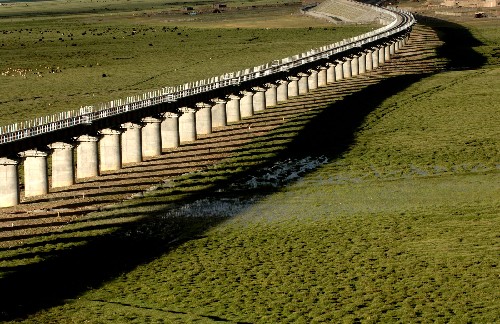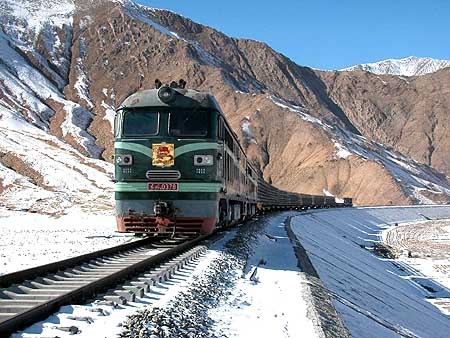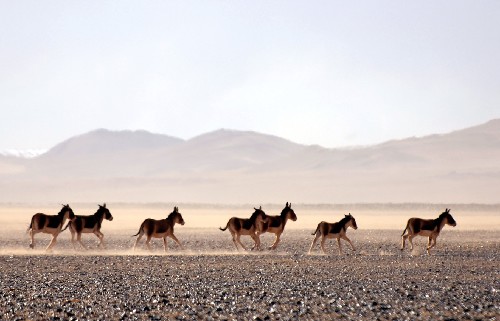Three major challenges building the railway on Qinghai-Tibet Plateau
Chinese engineers tackled three major difficulties in building the world-highest railroad to rewrite the world's history of railway construction.
The three obstacles are permafrost, high altitude and environmental protection of fragile ecosystem.
Permafrost and wetland:

There is total 550 - kilometer section of permafrost along the rail. It features soft and wet soil in summer, hard and stretching in winter, which troubled all engineers in the world.
The most important solution is stone embankment - a layer of loosely piled chunks of granite about the size of baseballs that allows enough space between the rocks for air to circulate freely. In some places, the engineers bury ventilation pipes in the ground. The pipes simply allow the cold air to circulate underneath the rail-bed. In other spots, though, a pipe called a thermosiphon is sunk 5 meters (15 feet) into the ground and filled at the bottom with ammonia. The ammonia becomes gas at a low temperature, giving off a vapor that draws heat from the bottom of the tube and flushes it out the top, cooling at the same time. Building a bridge over the permafrost is the most expensive way to have the least impact on the area. The 11.7km Qingshuihe Bridge is the world-longest bridge built on the permafrost.
A monitoring system has been established to check the temperature change in the following years along the railroad.
High altitude:

The oxygen content along the railway is only 50-60 percent of that at sea level as some 960 km of tracks are built on plateau - more than 4, 000 meters above sea level. The highest point reaches 5,072 meters, more 200 meters higher than the Peruvian railway on the Andes, which made it the world's most elevated track. Even the workers had to shoulder oxygen bottles to get to work. The annual average temperature on some construction sites is below zero degree Celsius with the lowest temperature at -45 degree Celsius.
Some 100,000 engineers and construction workers got involved in building this engineering feat, 10% of them were from local ethnic groups. None of the workers died of altitude sickness in the past five years...
Environmental protection of fragile ecosystem:
Some RMB1.54 billion was invested in the environmental protection in the project.

● Protection of the ecological environment has been an essential concern in the design of the Qinghai-Tibet Railway. The routes were selected so that they would keep away from the major habitats of wild animals. For example, the original route was abandoned because it passed through the reserves of black-necked cranes. While in some other places like the section cutting through the Hohxil, Qumar and Soga nature reserves, the planners tried to minimize disturbance to the nature reserves for endangered Tibetan antelope, wild ass by building 25 passageways for wild animals based on their migration habit. To prevent damage to permafrost and wetlands, the planners designed many bridges with a total length of about 13km.
● Reducing the adverse impact of the railway construction on the ecological environment to the minimum. To achieve this goal, all the construction units have signed a responsibility pledge for eco-environmental protection with the Qinghai-Tibet Railway Construction Planning Office. All the units took measures to minimize the pollution that the railway construction might cause to the plateau's ecological environment. To achieve this goal, the construction units have tried to use high-efficiency, low-noise and low-pollution equipment. They have tried to adopt more mechanized ways of construction and use as few administrators and workers as possible on the work sites. The Office requires that all waste water from construction and camp sites be processed to meet the corresponding sewage treatment standard before discharge. Solid waste from construction sites and trash from campsites must be sorted out and recycled whenever possible. Waste and trash that cannot be degraded should be moved to appropriate places for batch treatment.
● All the train cars were installed with environment-friendly toilets, wastewater deposit tanks and garbage treatment facilities to protect environment along the railroad.

